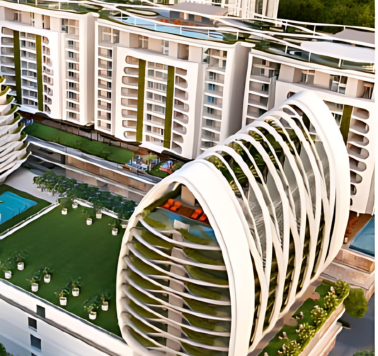High rise buildings are an integral part of modern urban landscapes, reshaping skylines and transforming cities into bustling metropolises. But what exactly defines a high rise building, and what makes them unique?
High rise buildings are marvels of modern engineering and design, playing a crucial role in shaping the urban environment. While they present unique challenges in terms of design, safety, and investment, the benefits they offer make them a key component of future urban development.
Let’s dive into the world of towering structures and explore their definition, design intricacies, safety measures, and investment potential.
What is a High Rise Building?
A high rise building is generally defined as a structure with a significant number of floors, usually over 12 to 15 stories, making it taller than low and mid-rise buildings. These buildings are designed to accommodate a large number of people and often house offices, apartments, or hotels.
The Evolution of High Rise Buildings
The concept of high rise buildings has evolved significantly over the years. From the early steel-framed skyscrapers of the late 19th century to the ultra-modern, eco-friendly towers of today, high rise buildings have continually pushed the boundaries of architectural and engineering innovation.
Definition of High Rise Buildings
Height Criteria
The definition of a high rise building can vary depending on local regulations and building codes. However, a common benchmark is any building that is taller than 75 feet (approximately 23 meters) or has more than 12 to 15 stories.
Types of High Rise Buildings
High rise buildings can be categorized based on their use:
- Residential High Rises: These include apartment complexes and condominiums.
- Commercial High Rises: These buildings house offices, corporate headquarters, and retail spaces.
- Mixed-Use High Rises: Combining residential, commercial, and sometimes industrial spaces within a single structure.
Design of High Rise Buildings
Architectural Considerations
Designing a high rise building requires careful planning and consideration of various factors, including aesthetics, functionality, and compliance with zoning laws. Architects must also account for the building’s impact on the surrounding environment and cityscape.
Structural Engineering
The structural integrity of high rise buildings is paramount. Engineers employ advanced techniques and materials to ensure these structures can withstand loads, including the weight of the building itself, occupants, furniture, and external forces such as wind and seismic activity.
Sustainable Design
Incorporating sustainability into the design of high rise buildings is becoming increasingly important.
Green Building Materials
Using environmentally friendly materials that reduce carbon footprints and enhance energy efficiency is a key aspect of sustainable design. This includes recycled steel, low-emission concrete, and sustainable wood products.
Energy Efficiency
High rise buildings are now being equipped with energy-efficient systems, such as solar panels, green roofs, and high-performance glazing, to reduce energy consumption and lower operational costs.
Safety in High Rise Buildings
Fire Safety Measures
Fire safety is a critical concern in high rise buildings. Modern high rises are equipped with advanced fire detection and suppression systems, including sprinklers, fire-resistant materials, and smoke control systems.
Earthquake Resilience
In regions prone to seismic activity, high rise buildings are designed with earthquake resilience in mind. This includes the use of flexible materials and structural systems that can absorb and dissipate seismic energy.
Evacuation Protocols
Emergency Exits
Ensuring there are adequate and easily accessible emergency exits is vital. These exits should be clearly marked and free from obstructions.
Evacuation Drills
Regular evacuation drills help prepare occupants for emergencies, ensuring they know how to exit the building quickly and safely.
Investment Insights for High Rise Buildings
Market Demand
The demand for high rise buildings is driven by urbanization, population growth, and the need for efficient land use in densely populated areas. High rise buildings offer the advantage of maximizing usable space in cities where land is scarce.
Financial Benefits
Investing in high rise buildings can be financially rewarding.
Rental Income
High rise residential buildings can generate significant rental income due to their prime locations and desirable amenities.
Property Appreciation
High rise properties in key urban areas often appreciate over time, providing substantial returns on investment.
Risks and Challenges
Investing in high rise buildings also comes with risks, such as market volatility, high construction costs, and regulatory challenges. Investors need to conduct thorough due diligence and risk assessment.
FAQs
What is the difference between a high rise and a skyscraper?
A high rise building is generally defined as any building over 75 feet tall, while a skyscraper is typically considered to be much taller, often exceeding 150 meters (approximately 492 feet).
Are high rise buildings safe during natural disasters?
High rise buildings are designed to be safe during natural disasters, with features such as earthquake-resistant structures and advanced fire safety systems.
How do high rise buildings impact the environment?
High rise buildings can have both positive and negative environmental impacts. While they can lead to increased urban density and reduced land use, they can also contribute to higher energy consumption and emissions if not designed sustainably.
What are the most important design considerations for high rise buildings?
Key design considerations for high rise buildings include structural integrity, fire safety, accessibility, energy efficiency, and compliance with local building codes.
Is investing in high rise buildings profitable?
Investing in high rise buildings can be profitable, offering potential for high rental income and property appreciation. However, it also comes with risks that should be carefully evaluated.

